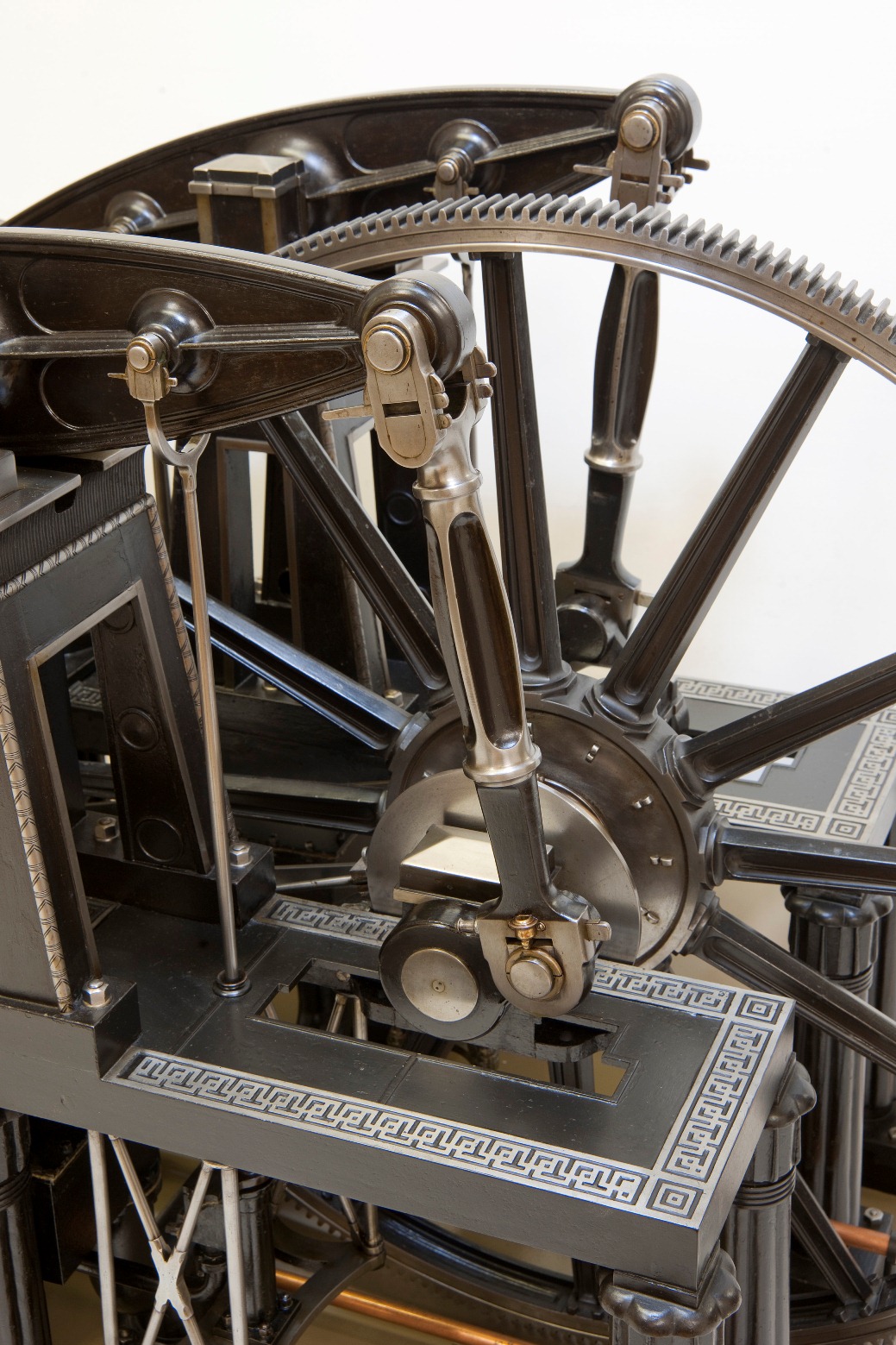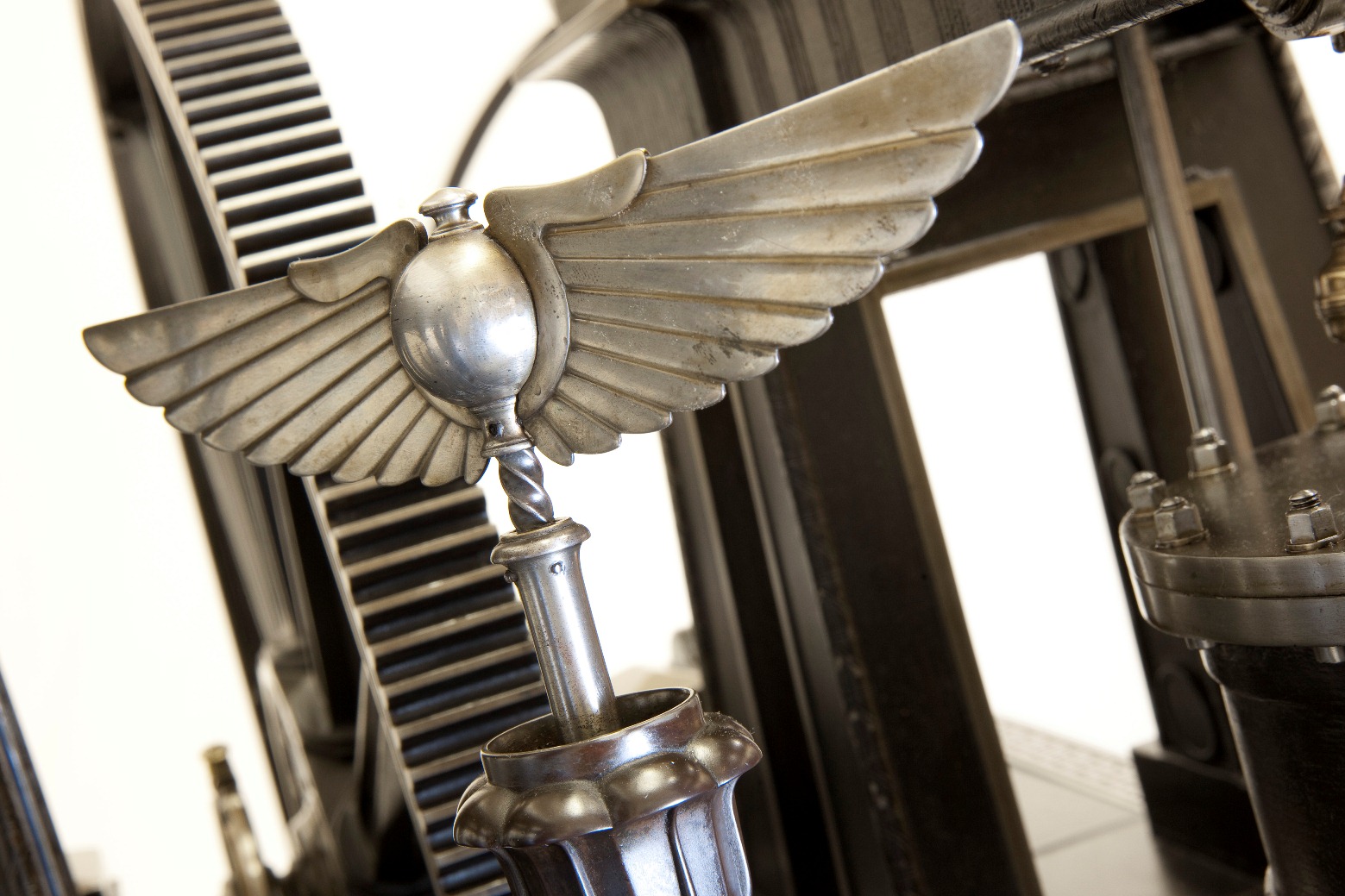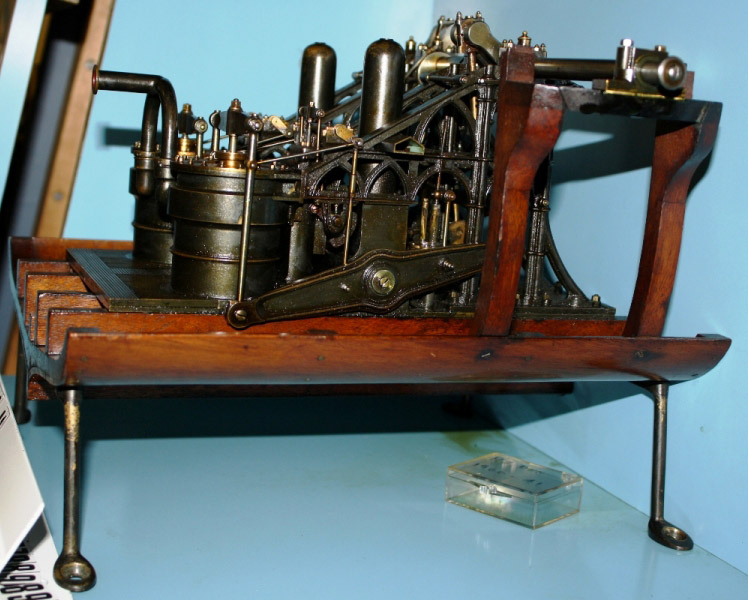Our summer spectacular, The Energy Show, is staged in a steampunk world which blends the past and the future. Much inspiration for the show was taken from the Science Museum’s collection, especially the machines of The Energy Hall. Ben Russell, Curator of Mechanical Engineering, talks here about some of our ‘steampunk’ objects in the Museum.
Beam engine by Benjamin Hick, 1840. Inv 1935-513

Modern technology values function over anything else. Things are stripped down and smooth in appearance. Steampunk is a welcome kickback against this minimalist modern world we live in, reasserting the importance of form against function – and we can find this delicate balancing act played out in our collections.
Take this beam engine, for example. It’s a model of a full-size engine built in 1840 by Benjamin Hick of Bolton for a Leeds flax mill. It was an immense building, possibly the largest single room in the world. To animate the machines inside, Hick’s engine was certainly powerful, but in building it he gave full reign to his imagination. The result was an Egyptian engine: It has columns with papyrus-headed capitals, a mighty entablature inspired by a temple overlooking the River Nile, and the ‘chronometric’ governor to control the engine’s speed takes the form of a scarab beetle.

Later Victorian design became rather bulbous, even grotesque, in appearance. But Hick’s engine is a sinuous masterpiece of epic design and brute strength. It reminds us not only of our creative debt to bewhiskered, roaring, big-jawed machine-makers like Hick, but also the significance of amazing nineteenth century machines, not just as a means to the end of production, but as symbolising national affluence and virility. In our present situation, it’s a lesson worth remembering: if you mean business, build machines that shout it out to the world.
Cooke and Wheatstone two-needle telegraph, 1851, Inv 1884-95

A recurring theme in Steampunk is the application of nineteenth-century design ideas to modern digital technology: laptops, PCs, even memory sticks can be made antique with brass gearwheels, dials and mahogany cases.
Colliding state of the art technology with the Gothic isn’t just a recent thing, though. In 1837, William Cooke and Charles Wheatstone patented the world’s first successful telegraph system. It was mainly used on Britain’s evolving railway system, conveying messages via wires running alongside the tracks. A slightly lesser-known use of this pioneering system was to convey messages and reports across London, from the Houses of Parliament at Westminster to clubs in St James’s.
The Electric Telegraph Company was formed in 1846 and this instrument was installed at the Houses of Parliament in 1851. As a ‘black box’ of purely functional appearance, it would have jarred badly against the Gothic Revival style adopted in the newly rebuilt Palace of Westminster. So, the telegraph was fitted with its admirable Gothic casing, complete with pointed arch, finial, and delicately-realised columns. It must surely have lent a feeling of permanence and robustness to the room that it graced, reflecting the standing of Parliament – and also pre-empting one of the major pillars of steampunk.
Model of the side-lever engines of the Paddle Ship ‘Dee’, 1832. Inv 1900-41

The problem with modern technology is that so much of it is intangible, digital, virtual, ephemeral. This point of view certainly underpins many Steampunk projects.
It wasn’t always like this, of course: introducing steam power to ships during the nineteenth was the cutting edge of serious heavy metal technology, and was a highly demanding field to design machines for: engines couldn’t be too heavy, they had to have a low centre of gravity, they couldn’t take up too much space.
These prerequisites offered valuable motivation to innovate in engineering design styles. Rather than big, heavy, monolithic construction and great slab-sided machines, engineers evolved lighter cast-iron structures, with lots of space, openings, and details which could be embellished without adding too much weight. Gothic engines? Check.
This model was built in 1832 for the Paddle Ship ‘Dee’ by the London company Maudslay, Sons and Field. Maudslay was a prolific model-maker, trying out new ideas before committing to them full-size, and this model is one of the finest surviving. The delicate cast iron Gothic tracery of its framing would not look out of place in a cathedral – a very tangible record of the creative impulses afforded to engineering, and perhaps inspiration for those Steampunkers looking for something a little out of the ordinary.
Take a look at our own Steampunk set Science Museum Live: The Energy Show which runs until 31 August. Book tickets and find more information here.